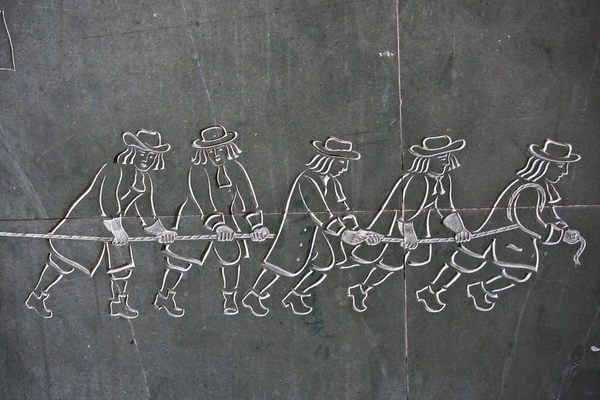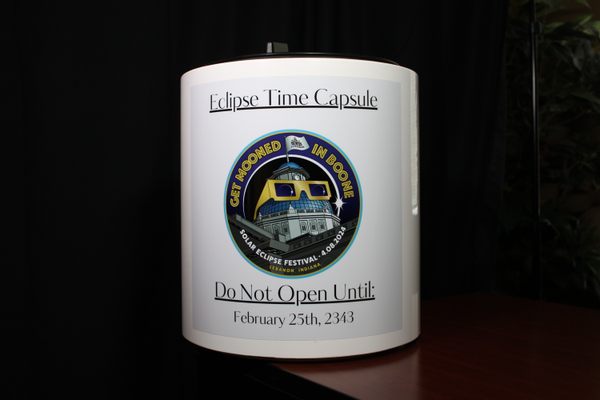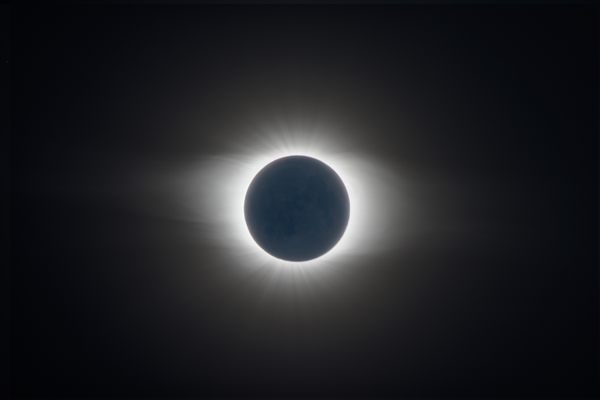The Frost Fair: When the River Thames Froze Over Into London’s Most Debaucherous Party
George Thompson, “A view of the river Thames” (1814) (© Museum of London), showing the last Frost Fair
From about 1550 to 1850, the world was in what scientists have deemed a “Little Ice Age.” The frigid centuries included the spectacular sight of the River Thames in London freezing over, sometimes with ice so solid people decided to go out and have a festival on the river.
The Frost Fairs were staged on the frozen Thames in 1683-4, 1716, 1739-40, 1789, and 1814. Parallel exhibitions commemorating the 200 year anniversary of the last Frost Fair in February of 1814 are being held at the Museum of London in the City of London and the Museum of London Docklands. Frozen Thames: Frost Fair 1814 shows the winter bacchanalia from the Frost Fair, where the main trade was booze and the principal activity was having as wild a time as possible without breaking the ice.
Through etchings, paintings, mementos printed by enterprising press owners, and even a 200-year-old block of gingerbread — the “only surviving piece of gingerbread bought at the 1814 Frost Fair” — you can get an idea of the joy and chaos of the Frost Fairs. It seems the artists most delighted in showing people falling on the ice (one of the drinks served along with beer and gin was a highly intoxicating concoction called “Purl” that involved wormwood), but you can also spy participants roasting sheep, playing games like bowling and “throwing at cocks” (that seemed to involve hurling things at roosters), and even fox hunting and bull-baiting. Some reports even claim an elephant walked across the ice, but sadly it did not make it into these tableaux.
Of course, every ice event has its seasonal end, and the Frost Fair would conclude tumultuously with the sounds of cracking ice and inebriated revelers scrambling for the shores. While with the current climate and the alteration of the architecture of the Thames it’s not likely there will be another Frost Fair, you can find memories of it in the city. Under the Southwark Bridge, Richard Kindersley created a series of engravings on slate remembering the fair with this inscription:
Behold the Liquid Thames frozen o’re,
That lately Ships of mighty Burthen bore
The Watermen for want of Rowing Boats
Make use of Booths to get their Pence & Groats
Here you may see beef roasted on the spit
And for your money you may taste a bit
There you may print your name, tho cannot write
Cause num’d with cold: tis done with great delight
And lay it by that ages yet to come
May see what things upon the ice were done
Below are more photographs of the Frost Fair courtesy the Museum of London. (Be sure to click on them to pull up a slideshow with larger views.)
Abraham Hondius, “The Frozen Thames, 1677,” (© Museum of London)
Detail of Abraham Hondius, “The Frozen Thames, 1677,” (© Museum of London), showing snowball fights and treacherous crossings
“Frost Fair on the River Thames, 1684” (c.1800), unknown artist (© Museum of London)
Detail of “Frost Fair on the River Thames, 1684” (c.1800), unknown artist (© Museum of London) showing bull-baiting and fox hunting
Detail of “Frost Fair on the River Thames, 1684” (c.1800), unknown artist (© Museum of London) showing “the drum boat” and “boyes slideing”
Detail of “Frost Fair on the River Thames, 1684” (c.1800), unknown artist (© Museum of London) showing “men throwing at cocks”
“Frost Fair on the River Thames, 1684” (c.1812), unknown artist (© Museum of London)
“A Frost Fair on the Thames at Temple Stairs,” 1684, Abraham Hondius (© Museum of London)
Detail of “A Frost Fair on the Thames at Temple Stairs,” 1684, Abraham Hondius (© Museum of London)
“A View of Frost Fair, on the Thames, February 1814,” Unknown artist (© Museum of London) Note the drinking tents called “Wellington,” “Good Gin,” and “Moscow,” and on the right are boats stuck in the ice and a printing press selling souvenirs. A donkey race is also at the top right.
Detail of “A View of Frost Fair, on the Thames, February 1814,” Unknown artist (© Museum of London), showing swings and people falling on and into the ice
“February – Frost Fair 1814,” (1838), George Cruikshank (© Museum of London), with masts of marooned ships visible in the background
“Gambols on the River Thames. Feb 1814,” George Cruikshank (© Museum of London), note the man with his wooden leg stuck in the ice
“The fair on the Thames, February 1814,” Luke Clennell (© Museum of London)
“The fair on the Thames, February 1814,” Luke Clennell (© Museum of London)
Detail of “The fair on the Thames, February 1814,” Luke Clennell (© Museum of London)
“View of the Thames off Three Cranes Wharf, 1814,” Burkitt & Hudson (© PLA Collection / Museum of London)
Printed keepsake, 2 February 1814 (© Museum of London) “This simple, hastily produced example conveys the urgency and excitement of being there.”
“Printed keepsake, 5 February 1814” (© Museum of London) “It is a comic message from A Thaw to Jack Frost telling him to leave the Thames. Printers and other stall holders had to withdraw hurriedly from the ice when it began to melt on 5 February 1814.”
“Frostiana title page, 5 February 1814” (© Museum of London)
“Gingerbread and wrapper, 1814” (© Museum of London) “This is the only surviving piece of gingerbread bought at the 1814 Frost Fair. At 200 years old it is now a little hard, but still smells of ginger and spice. “
Gingerbread and wrapper, 1814 (© Museum of London)
Frozen Thames: Frost Fair 1814 is at the Museum of London in the City of London and Museum of London Docklands through March 30, 2014.












Follow us on Twitter to get the latest on the world's hidden wonders.
Like us on Facebook to get the latest on the world's hidden wonders.
Follow us on Twitter Like us on Facebook